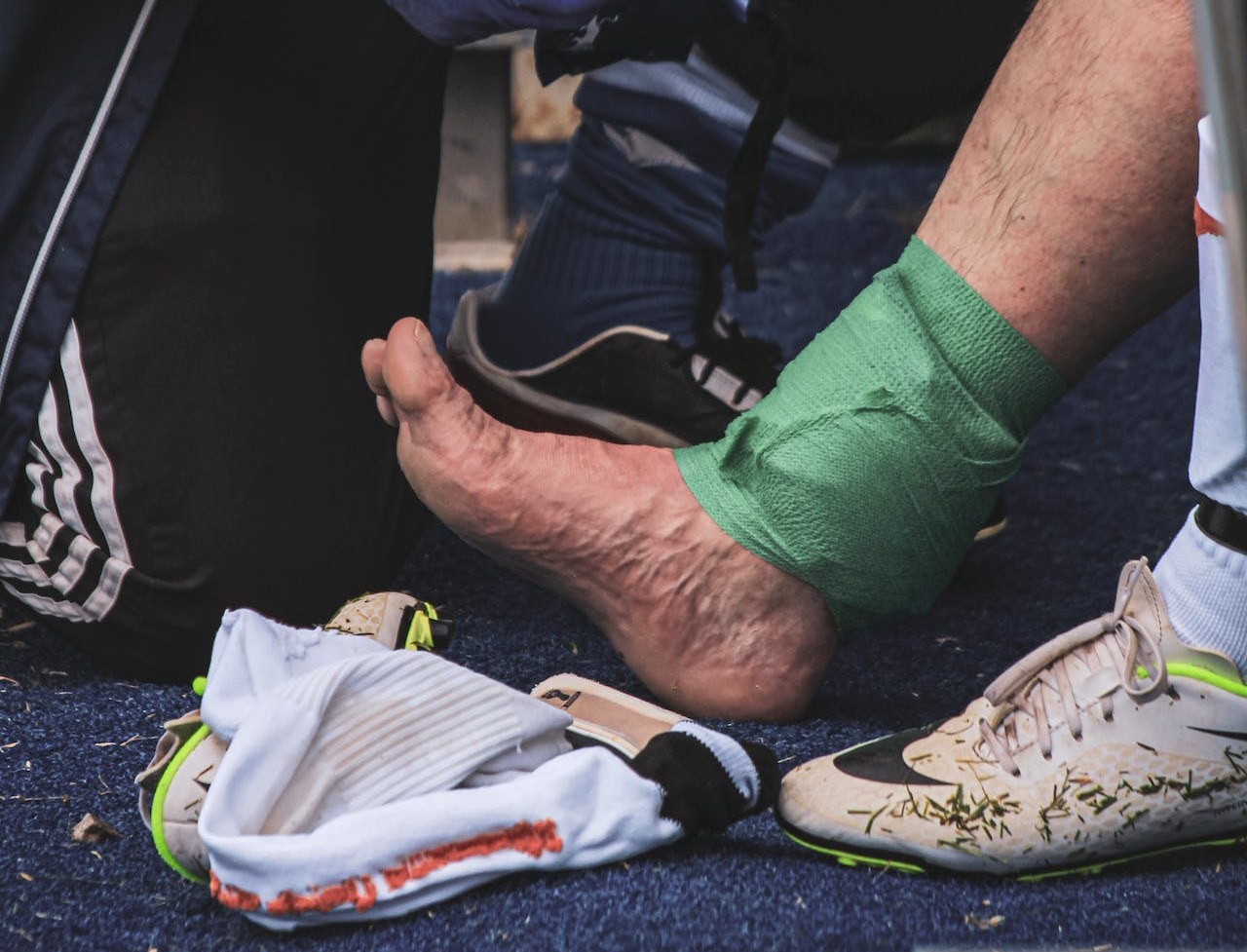Schedule An Appointment With Us
Are Your Symptoms Affecting Your Quality Of Life?
Consult our MOH-accredited orthopaedic surgeon for an accurate diagnosis & personalised treatment plan.
MBBS
MRCSEd
MMED (Ortho)
FRCSEd

An ankle fracture is a condition where one or more bones constituting the ankle joint are broken. This means that there is damage in any of the three bones comprising the ankle, which includes the tibia (shinbone), the fibula (smaller bone in the lower leg), and the talus (the bone that connects the foot to the lower leg, situated above the heel bone).
Ankle fractures range from simple, non-impeding breaks to complex fractures causing dislocation and instability.
Ankle fractures can be classified based on which bones and parts of the ankle are affected.
This type of fracture occurs in the fibula, typically on the outer side. It is one of the most common types of ankle fractures.
This fracture affects the tibia, particularly on the inner side of the ankle. It involves a break in the medial malleolus, the small prominent bone on the inner side of the ankle.
This fracture occurs in the back portion of the tibia at the level of the ankle joint. It often accompanies other types of ankle fractures due to the ligament attachments in this area.
This involves fractures in two of the three parts of the ankle, typically the lateral and medial malleoli. Due to the involvement of multiple bones, these fractures often result in instability of the ankle joint.
In this type, all three parts of the ankle are broken, including the lateral malleolus, medial malleolus, and posterior malleolus. Trimalleolar fractures are complex and typically require more extensive treatment due to the serious instability they cause in the ankle joint.
Ankle fractures result from various incidents that put undue stress or impact on the ankle joint. Common causes include:
Common indicators of ankle fractures include:

The diagnosis of an ankle fracture often involves a review of medical history, physical examination, and imaging tests.
Non-surgical treatments can be considered for certain types of ankle fractures, especially if the fracture is small and the ankle remains stable.
Immobilisation |
The ankle specialist may suggest using a cast, walking boot, or brace to keep the ankle stable and to ensure proper alignment during the healing process. |
Crutches |
Crutches are often recommended to avoid putting weight on the injured ankle. |
Anti-inflammatory Medications |
These are prescribed to reduce inflammation and alleviate pain. |
Physical Therapy |
Physical therapy can help regain mobility in the ankle joint and strengthen the muscles necessary for walking and other activities. |
Surgical intervention is often necessary for more severe ankle fractures, particularly when the fracture is displaced, involves multiple bones or the ankle is unstable. They aim to reposition and stabilise the bones for optimal healing.
This procedure involves repositioning the bone fragments into their normal alignment and securing them with metal plates and screws.
In certain fractures, like medial malleolus or lateral malleolus fractures, the repair might involve placing screws or pins to hold the bone fragments together.
In cases where the fracture is extensive or involves larger sections of bone, metal plates along with screws might be used to provide stability.
Schedule An Appointment With Us
Consult our MOH-accredited orthopaedic surgeon for an accurate diagnosis & personalised treatment plan.
Effective prevention strategies can help reduce the risk of ankle fractures.

MBBS
MRCSEd
MMED (Ortho)
FRCSEd
With over 18 years of experience, Dr Poh Seng Yew is an orthopaedic surgeon specialising in hip, knee, shoulder and elbow surgery, sports medicine, and trauma surgery.




Weekdays: 9.00am – 5.00pm
Saturdays: 9.00am – 1.00pm
Sundays and Public Holidays: Closed
Please leave us a message, and we will be in touch with you shortly.
The ability to bear weight on your ankle after a fracture depends on factors such as the type of fracture, its stability, and the treatment prescribed. In cases of stable or minor fractures, limited weight-bearing might be initially recommended. Immobilisation with a cast or brace is often necessary to protect the fracture. As healing progresses, weight-bearing activities can be gradually introduced under medical guidance.
Stiffness is common after healing from an ankle fracture, particularly if immobilisation was part of the treatment. Physical therapy plays a role in addressing stiffness and improving joint mobility. Exercises and stretches guided by an ankle specialist help restore ankle function and reduce long-term discomfort.
The healing time for ankle fractures varies depending on the injury’s extent. While many ankle fractures heal within approximately 6 weeks, the time frame may extend for more severe cases.
Sleeping with a fractured ankle often requires keeping the ankle elevated to reduce swelling. Using pillows to prop up your leg can be helpful. Follow your ankle specialist’s instructions on immobilisation and movement during the night to ensure proper healing.
Leaving an ankle fracture untreated can lead to complications such as improper bone healing (malunion), non-healing (nonunion), and increased risk of arthritis. Seek medical help for an accurate diagnosis and appropriate treatment plan to avoid these complications and ensure optimal recovery.